Text

This year at university I had the opportunity to choose an optional module, distinctive from my course. My university calls these modules Add+Vantage modules, because it is thought these classes will give help you gain valuable experiences and become a better professional. I chose the module titled “Smart Phone Apps: From Concept to Design and Market”. The title caught my attention and convinced me to pursue learning more about mobile apps, as I had extensive previous experience with computer science and coding. So, I gave it a go.

It had positive parts, negative parts and some parts I thought I was under the influence of a sleeping drug. That ‘sleepy’ part is not a joke, but a very important matter. It is about the teacher of this class. Now, I do not doubt his knowledge about what he was teaching, because he proved to be a highly skilled expert, both in app design and game design (as he is primarily a game design teacher). What he did not control very well was how to make things interesting for his audience: a bunch of students from the most unrelated subjects, from Interior Design to Sports Management and Mathematics. Let me further explain. His classes were doomed by the monotonous single pitched lectures and lack of excitement. I have my ways of keeping myself motivated and interested so I was not disturbed by this too much, but unfortunately, other classmates were truly affected by this issue. From furiously checking Facebook in search of some excitement to taking online quizzes about football players, the teacher failed to captivate the interest of the other students. I believe there are simple measures that could enhance the delivery of the otherwise great content: be passionate about what you teach, have a clear discourse and use at least a molecule of humour.

To put this into contrast, my Graphic Design module involved the creation of an app proposal. The teacher presented us some of her knowledge in a lecture just under an hour. The content proved to be better than any expectations I had and I was astonished to realise that I learned more in one lecture that was delivered exceptionally than I have learned in over half of semester in my App Design module. It was the humour, the smart examples and the passion of teaching that my graphic design module leader expressed in those 50 minutes that made me and all my classmates be interested in creating mobile application designs. Immediately after the end of the lecture, I reminded myself how important it is to have a great teacher. So, I told exactly what I wrote in this paragraph to my teacher in a sign of appreciation.

Returning to my app module. Even though the atmosphere of the whole class was quite dull and not very uplifting, I found myself being very inspired from the first lecture, as I had come up with an interesting idea for an app called ‘Artelier’. My app was an online marketplace that would allow artists to submit their artwork online and art lovers to buy these artworks easily. The difference between this shop and any other art gallery shop? The app is a personalized, tailored experience for the user by suggesting artwork based on interests and preferences. I lead a small group of people into devising a very comprehensive business plan, including market research, surveys, SWOT analysis, marketing plan and a thorough branding and user interface of the app. The app was very successful in class and was appreciated by teachers up to the point when we were encouraged to launch it with the help of the university. My team and I decided to continue developing this app with the goal of making it reality in the upcoming years, either with the help of masses, through crowdsourcing websites, or by finding potential investors or business partners.
“Out of wounds, mildews and slinging mud I've raised new and priceless beauties.” -Tudor Arghezi, Romanian poet
This last semester taught me that even though the circumstances of an event are not prolific, the value you bring into the discussion can truly change the outcome. It is ultimately your individual duty to gain as much value from anything you are exposed to and not to lose time, energy and money while waiting for things to change. You must be like a greenhouse. A greenhouse that, even when it doesn’t receive too much sun, is still able to grow beautiful flowers through its glass.

0 notes
Text

I love stories. I love fairy tales, novels, 50 Shades of Grey. You name it, I love it. Leaving the joke aside, I was always an enthusiast of stories. One of my favourite books as a kid was “La Fontaine's Fables”, which included a collection of 239 fables that were usually depicted with intricate illustrations. It is one of those books that you can read as a kid and love and then return to it when you are older and adore. One of the most memorable fables of La Fontaine was “Hercules and the wagoner”.
“A carter was driving a wagon along a country lane when the wheels sank down deep into a rut. The rustic driver, stupefied and aghast, stood looking at the wagon and did nothing but utter loud cries to Hercules to come and help him. Hercules, it is said, appeared and thus addressed him: “Put your shoulders to the wheels, my man. Goad on your bullocks, and never more pray to me for help, until you have done your best to help yourself, or depend upon it you will henceforth pray in vain.”
Why would I bring that up? After all, this is a graphic design blog. It will make sense later after I finish explaining one of the most important events of the past four months at university. At the beginning of the 2nd semester of my Graphic Design course, I was assigned the project manager role for a group project for my Design Practice module. My team involved four other members, besides myself. Out of these teammates, there was one girl which had a peculiar case: in the first semester, she only came to classes in the first couple of weeks and then disappeared completely, only to return submitting all her work. Whilst impressed that she even managed to submit anything, I had major concerns regarding her future contribution to the group project. I asked her if anything like that could happen in this start of the semester and she assured me everything is going to be alright. Immediately after the first week passed, the girl in question disappeared and up until this day I haven’t heard from her. I tried to contact her, but with no luck. At that point, we had 10 weeks to go, a lot of work to get done and already a handicap. It was just as if our pinkie finger from our hand suddenly surrendered.
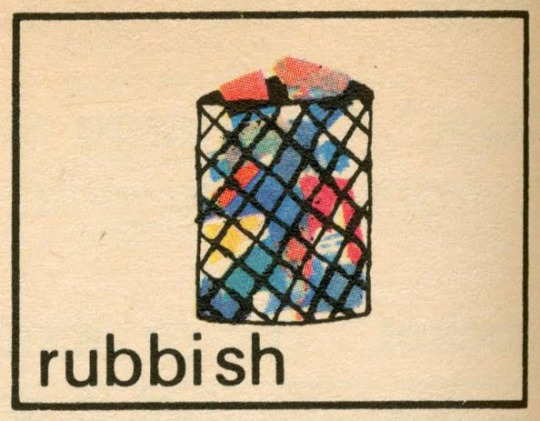
My case was no different from most other teams. Other groups had similar or even identical cases: students disappeared or refused to work. As I talked with my classmates about it I found out about their pressuring concerns: most of them were angry that now they are put into a situation where they either work additionally for someone else or they risk failing the module. They hated the idea of working ‘uselessly’. They tried to talk to the teacher to reduce parts of group work. They complained about it for the whole semester and, after the semester will end, they will probably still complain. They were annoyed that someone did that to them. But not once did they see the opportunity I saw.
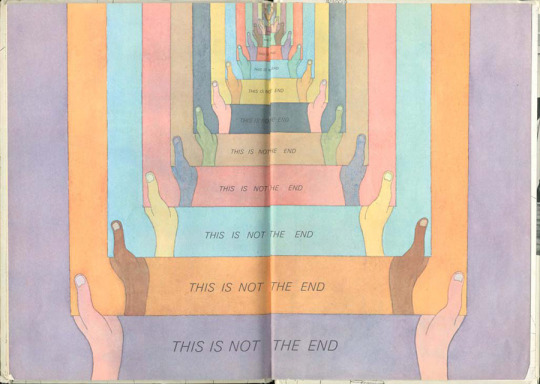
I tend to believe I am quite a positive person. I force myself to see the best in every scenario. It is said that you should see the glass half full, rather than half empty. In my case, even when the glass is fully empty, I just pour some more water in it. When I was faced with the situation of having to work, I, unlike my classmates, happily embraced that and understood a great opportunity. As a student, I am in a workshop of experimentation. I am here as the novice to learn as much as I can, from everything and everyone. These are the years where I gain massive experience for my future professional life. Not only that I dedicate my time exclusively for this, but I also pay a lot of money for this. The effort and years of hard work now will be repaid tenfold later, as a mature graphic designer.

So, I worked hard. I worked more than it was expected of me. I dedicated less free time and more work time. There were days where I was a true soldier. A soldier that would go into a battle against the never-ending workload, complete the mission until dawn and return victoriously home, only to complete the same mission the next day. Was it easy? It would be a lie to say so. Was it convenient? Not at all. But, in the end, after I completed everything perfectly, I couldn’t be happier. The struggles only made me learn faster. The workload only taught me to organize myself better. The little free time I had only made me value whom I spend it with. The ‘handicap’ I had, in the end, helped me more than I could have ever imagined. And when I will get employed, I will work better, smarter and faster than most other graduates, because I strongly believe that, unlike many, you can get as much as you want from an experience, either positive or negative. As to the moral of the fable, “self-help is the best help.”
1 note
·
View note
Text

We learn from better-experienced people. We learn a lot of valuable lessons that we often cannot learn by ourselves. Those people have vast experience that they acquired through years and years and have decided to share some of their wisdom with others, in a form or another. They can be teachers, that share their wisdom for a living. They can be successful people that want to return something to the society. They can be mentors that inspire the next generations. They can be critics that can see past the obvious. They can be anyone if what they share has a value to the other person. They can be kids that teach us how to be humble. They can be the dogs that teach us about loyalty.

At university, we were encouraged to ask and give feedback from our peers as much as we could. By receiving multiple opinions about a design, we would take better decisions and, eventually create better designs. I soon started to love observing brand-new artworks and judging their best qualities and worst mistakes. I gave feedback as much as I could and the best I could. At first, I didn’t realize if it helped anyone. I wouldn’t believe so if you asked me. But a rather interesting matter happened after a couple of weeks. I was asked to give feedback to someone because they thought I had honest and useful opinions. I was motivated to do it more often as I enjoyed it and people benefited from it. Others followed: I was asked to give feedback both at university, but also in my spare time through instant messaging. And boy I did give as much feedback as I could: while designing, while eating, while being in another country or even while I was taking a dump. And up until today, I get perhaps one too many requests to share my opinions. By being asked by others to provide my experience, I feel that I am in a position where I could help and my judgement would matter.

In the past, my feedback giving mechanism involved a couple of steps. Initially, I would just look, analyze and interact with the specific artwork in the matter. This step would always happen in silence. I would never talk without having informed opinions. I always prefer admitting that “I don’t know” rather than pretending I know and provide a wrong direction. After the initial analysis, I would first explain what I like and what I believe it works, whilst using arguments and examples to contour my ideas. I would continue explaining what does not work, what is wrong or what I am unhappy with, while still providing rational arguments and examples that I believed aid my reasoning. Lastly, I would summarize the feedback by listing the strengths and weaknesses in simple terms. This method seemed to have worked wonders until I realized something that I did wrong all the time.

I would have always expressed my personal views in every feedback I would give. That meant I included my direct subjectivism into every critique. Even though that meant the critiqued designs would look prettier in my eyes, in the end, I became unsure of the global success of those designs and the growth of the individual artist. My style and my interests shouldn’t govern other people’s work. Instead, my critique should guide the designer into an overall direction, one without step by step tutorials. That way, they get to understand by themselves what works and what doesn’t. They will experience failure and they will grow faster by learning from their mistakes. Eventually, they will develop their skills so much, they will become independent on other’s feedback and they will critique their work perfectly without exterior help.
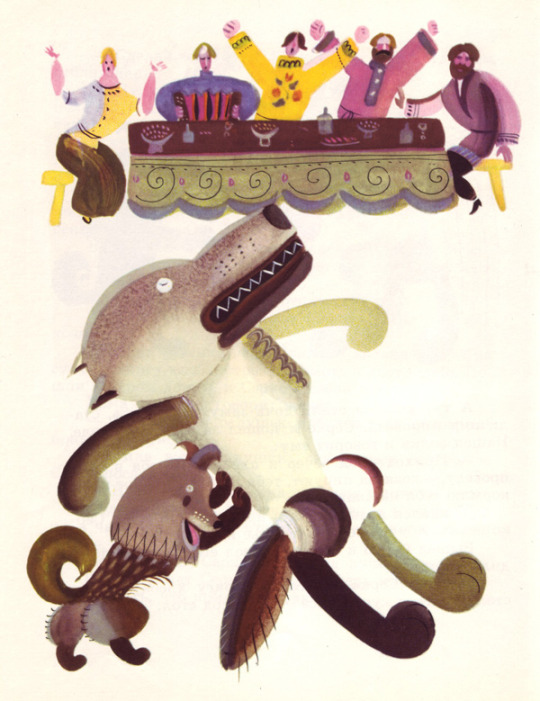
I realize now that it is crucial to allow room for individual growth in every piece of feedback I provide, as that would benefit the other person’s development more than they would realize. As the English proverb beautifully describes it, give a man a fish and you feed him for a day; teach a man to fish and you feed him for a lifetime.
0 notes
Text

I was a very curious kid. Not the inquisitive type that would bomb you with a million questions about everything that surrounds you: why? Why? WHY? No, I was different. I was the type of kid that on one hand would like to listen to others’ wisdom, but would prefer learning by himself. I would read books, encyclopaedias, journals and I would experiment and invent new things; anything I could get my hands on. I guess that this passion of learning was surely given to me at birth, being the product of two lovely teachers: a mathematician mother and a historian father.
Before I even went to school, I would play with my friends at my grandma’s. Every day, we would invent a new toy, tent or game using whatever scrap materials we could get. Quite ambitious, we once build a skateboard using wooden planks, shopping cart wheels and nails. That was a hardcore skateboard. When I was 8, I was in love with the outer space: planetary systems, meteorites, galaxies, etc. I would ask adults to tell me how many planets there are in the solar system, only to let them know that Pluto is no longer a planet (as of 2006, Pluto is a Dwarf Planet). I was also very passionate about mathematics. I would work on math non-stop at school, at home and I would participate (and win prizes) on any available math contest for my age in the country. My weekends often meant going to math contests to or collecting prizes from contests. My passion for learning as a kid was only a sneak-peak of what it followed as a teen.

At 11, I got interested in computer science. That is why I spent 8 years on learning algorithms, programming languages and practicing it on a regular basis. I got into video games. I learned how to play multiple music instruments throughout the years, including violin, guitar (electric & acoustic), bass and ukulele. I started bands and played in clubs. I starting writing my own songs. I loved writing lyrics. Lyrics made me love poetry. My passion for poetry made me love literature and art movements. I liked acting and expressing emotion. Then I started writing spoken poetry and performing it in front of people. My interests were like a never-ending string of desires. Above these interests, something greater governed: my passion for learning. I am destined to never stop learning new things. And I love it.
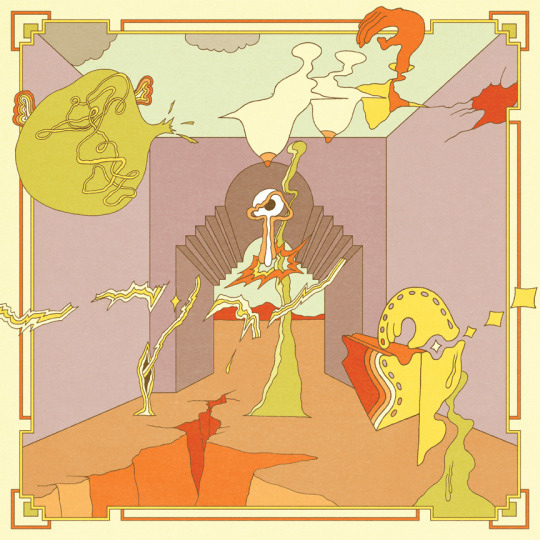
In 11th grade, I had to decide on what I should study after my high school graduation. I had narrowed my options to three: computer science, architecture and graphic design. I decided to pursue studying graphic design at university since I believe graphic design is a field which combines any piece of knowledge into a beautiful art form.
My childhood love for planets can be expressed in a progressive trance album cover.
I can illustrate artwork for skateboards.
I can use math in design in packaging.
I can design and code websites for businesses.
I can design UI’s for video games.
I can make music visualizers for musicians.
I can include my literary creations into my designs (see Sagmeister).

I can use design in virtually anything. My love for learning will never get ruined from repetitive work, from sitting all day in a cubicle or lack of motivation. I will get to work on new projects all the time. My passions blossom in parallel to my design knowledge. Everything I learn can be applied to design. Every new day is a different and exciting one. I wake up in the morning and I am happy doing what I love. I couldn’t see myself doing anything else but graphic design. It is said, “do what you love and you will not work one day in your life”. Graphic Design is a creative playground for adults and in this playground, boredom is not applied.
0 notes
Text

On planet Earth, there were and still are (at the time of writing this humble blog post) a great variety of species of animals. Some are strong, some are weak. Some are tall, some are short. Some have fur, some have feathers. Some are on the top of the food chain; some are on the bottom of it. But there is one mammal species that individualized itself through millions of years of evolution: the notorious human.
There were many ingredients to the success of our species, such as geographical position, improved learning abilities or sheer luck. I, however, will discuss only one of these factors: teamworking. We are the species that mastered the art of teamworking: multiple different individuals collaborating harmoniously, just like one single organism. We coordinated attacks on animals physically superior than us. We divided the work load wisely: females had the responsibility to protect the home, while males were hunters. We shared the past knowledge from generation to generation. We gathered into communities and formed alliances. We conquered land and expanded our dominance. Divided, we were one.
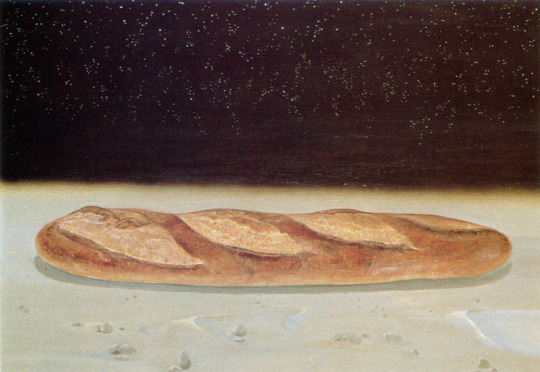
Fast-forward to the 21st century: teamwork still represents a major factor. That is why it is taught from a young age, consciously and unconsciously. As kids, we are encouraged to spend time with other children, to socialize and play. At school, we work on group projects to organize and direct ourselves towards a common goal. We play team sports, we organize parties and we share homework. Professionally, we are required to collaborate in virtually any job, be it policeman, doctor or graphic designer. Here, teamworking requires respect, clear communication, intent listening, transparency, planning skills and great time scheduling. In order to secure the success of any project, teams require a leader that manages the efficiency of the team members.
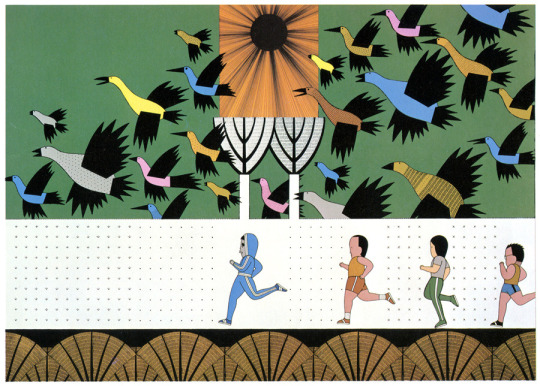
Through my experience so far with graphic design projects in teams, I have always taken the role of the designer, as well as the leader. On one hand, I would work on conceptualizing, experimenting and designing, and on the other hand, I would lead the team by example, I would motivate, critique and share my ideas, whilst planning and guiding meetings. Out of these leadership responsibilities, there is one mistake I would always do: deconstruct all the tasks of the project and then distribute them equally among all members of the team, regardless of every member’s preferences, experience or passions.

Story time. This semester I’ve been assigned the role of the project manager for a graphic design brief. Being a very large project, it included branding an exhibition, creating a house style for future reference, a gallery catalogue and a fully coded website. As usual, I have listed all our tasks, decided to meet weekly and assigned the same share of workload equally. At first, we were eager to get as much work done and we collaborated quite easily. But, as the time passed by, I observed how all my team members became inefficient, unmotivated and how their input on our meetings diminished. The interest in the project decreased as we dived in the specifics of our task. I was at a critical moment when I had to choose between continuing to work in a negative and inefficient landscape or to make a change.
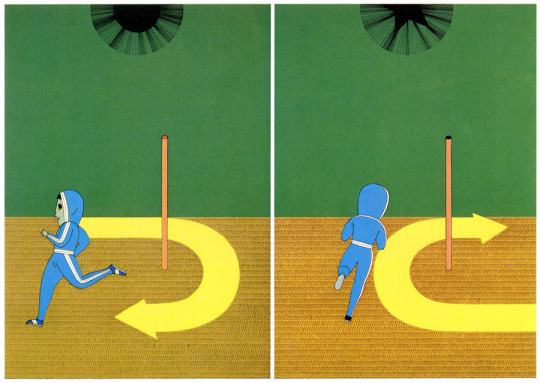
Fortunately, I decided the latter. Instead of focusing on giving everyone the same amount of work, I decided to give different tasks, easier or harder, depending on my teammates’ interests and experience. I remembered how one of my teammates’ laptop was ultra-organized: every module had its folder, all brief requirements for that module were perfectly compartmented into folders and every file was named accordingly. So, the next time I met him, I asked him to organize all our files in the cloud and to keep track of our meetings instead of fixing the vectors of our logos. As I expected, since he was such an organized person, he did a better job on something he enjoyed. I remembered how another team member said at one point that he would like to become a video editor after graduation. So, the next time I met him, I asked him to create a looped video for our website’s landing page. He immediately agreed and made the video in record time and great quality. If I would have done the video myself, it would surely consume exponentially more time and energy. The difference between us? He had a major interest in video editing and far more experience. Lastly, I valued how one of my teammates paid major attention to detail when proofreading, seeing the mistakes I could not see. That is why I made sure she’ll scan all copy for errors before continuing with the design. We found plenty of mistakes and we changed them in due time for submission thanks to her. As to me, I had vast experience in coding, so I took the responsibility to design and execute the web design. Even if I had a larger quantity of work to do, I had the vast experience that allowed me to finish it the fastest and with the greatest quality.
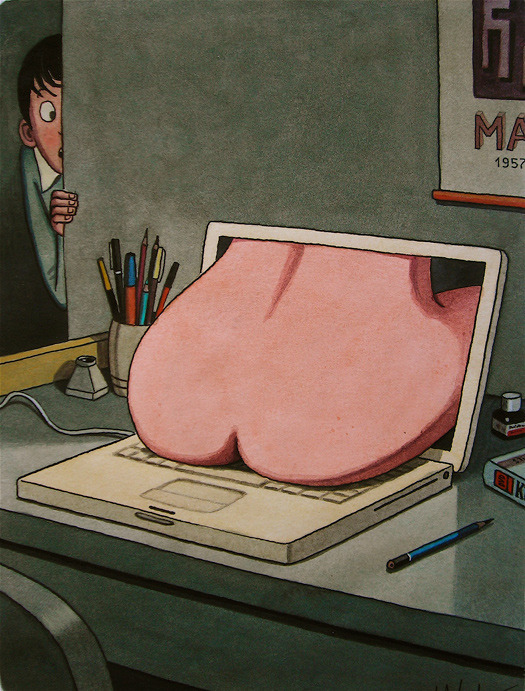
This experience taught me that a great leader and project manager takes into consideration the passions and the experience before starting planning anything. If someone enjoys working, he will outperform any other competitor. The interest in the subject matter is highly important and contributes to the well-being and the overall performance. Next time I will be the project manager in a team, I will take the time to know everyone better before starting listing, planning and designing. Next time I will be the project manager in a team, I will invite all members for a coffee. Or pizza. Or both. Next time I will be the project manager, I’ll ask if you can whistle. And if you can whistle, whistle!
#graphic design#art and design#project management#management#teamwork#university#coventry university#creative director
2 notes
·
View notes
Text

Remember the time when you found a new interesting word and after that you started hearing and seeing that word everywhere? Like ‘havoc’ or ‘radiant’. Superb words, right? Speaking of, ‘superb’ is a superb word. My tongue pretends to be French when I say it. What a wonderful time to be alive. Returning to my initial thought, when you find out about these words, everybody surely contributes to the greatest conspiracy: repeating that new word for you. It’s like that word never existed before you heard it; the whole universe found about that word when you firstly discovered it. We truly are pioneers of languages!
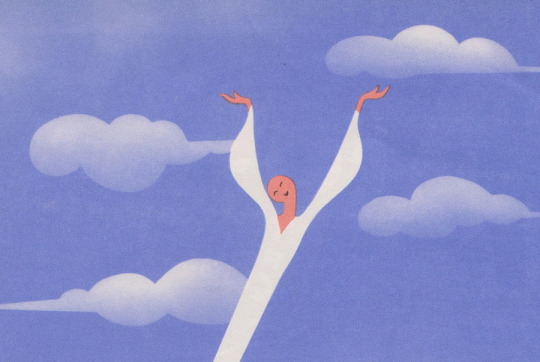
But wait! Not only we explore linguistic Badlands, but we also conquer other continents. For example, when you listen to music and find that out-of-this-world song. The song. That song which divided your life in half: before and after it. And then, all the planets align, everybody conspires yet again so that you’ll hear the song everywhere. That indie band in Gossip Girl? Yes. Kanye West old rip-off songs? Yes. Shakira? Maybe.
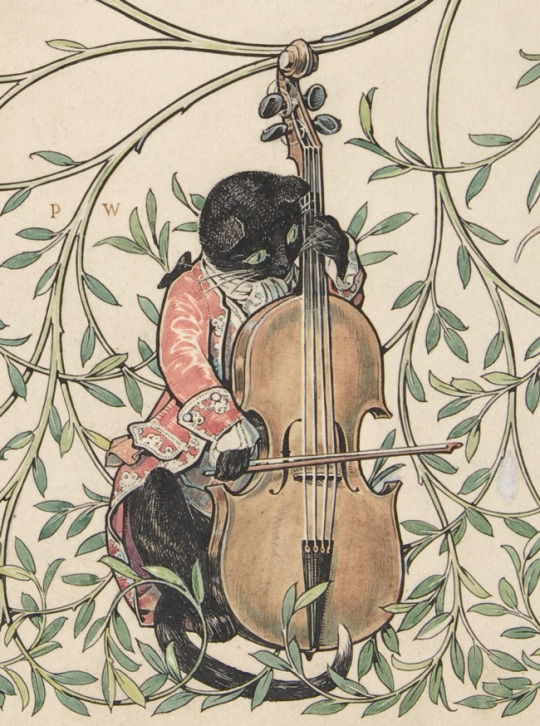
The point is, you become amazed how these things become so apparent to you. Or maybe, just maybe, you become aware of them. No, the planets don’t align. Nobody conspires. You are not a special snowflake in the epicentre of the universe. You simply hold more information in the present than you had in the past and you now have the ability recognize the patterns in your everyday life. You utilise knowledge to transform reality. You become aware of your past learnings in fresh examples. This applies to all fields of our life, not only words or music. And it happened to me recently, in Graphic Design.
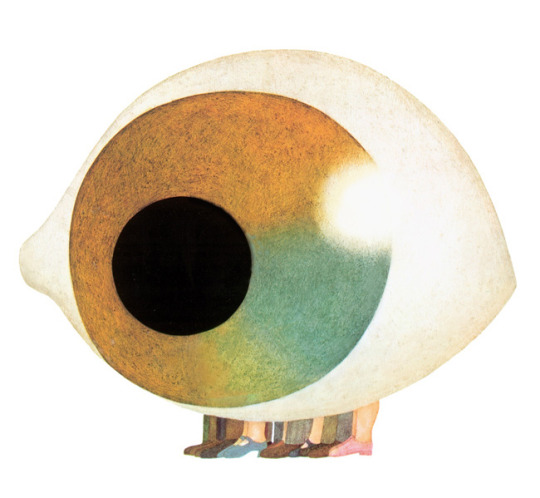
In the past, when I was a complete beginner in Graphic Design, I would superficially observe a design. I couldn’t explain why I liked it, what worked and what didn’t. I had no notion about great typographic practices, negative spaces or grid systems. ‘Clueless’ is how I would define my analysis process in the past. But as time passed by, I learned a great variety of tips, tricks and I have expanded my knowledge exponentially. I grow as an artist as much as I grow as a person. And now I see the knowledge I have learned every day, everywhere. I see the smart colour choice on the cereal box in the morning. I see the geometric sans-serif on virtually every tech branding (I’m looking at you Lenovo, Dropbox, Google). I see the bad kerning on that package of sausages. After I assimilated all this information, I see past beyond every artwork and I interrogate both its form and content. It feels like I own an x-ray filter on my eyes and I can visualise the creative process, the design decisions, its layout, the grid system, the fonts and so on. I cannot look at Graphic Design the same as before.
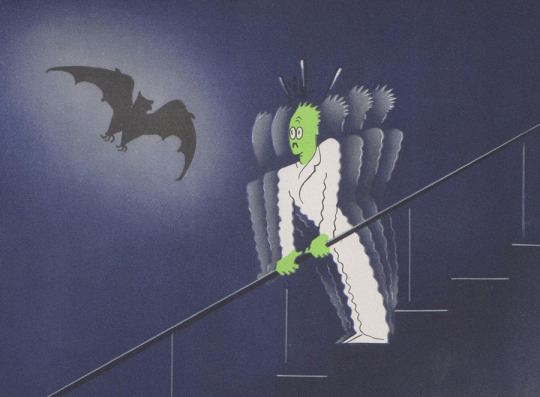
In this last semester, I intensively learned how to code websites for one of my modules at Coventry University. With little to no knowledge about coding websites, but with an immense desire to learn, I practiced coding on various educational websites, such as Codecademy, Khan Academy, W3School and even YouTube. I have developed a great understanding of the coding languages HTML and CSS, as I had 8 years of experience in coding in C++. The syntax, the elements and the various modern practices became like the verbs, the nouns and the slang of any another language. By experimenting, failing and absorbing the knowledge of others, I soon became fluent in coding. And, just like any other language, you start to understand it when you read or hear it. Being focused on web design for prolonged periods of time, I unconsciously became aware of it when I navigate on the internet. I now look for the coolest menu bars. I check out the responsiveness of the footer on small display sizes. I can now understand how the website was coded, what styles were applied and where you can find those fancy icons (it’s Fontawesome.io).
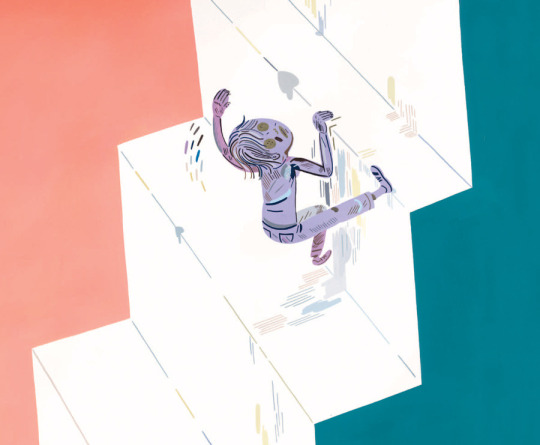
Just like words and songs, designs are no different. Once I gained in-depth knowledge, I stopped treating the artwork with indifference. I became literate in a visual language that I can now read it. I see past the first layers printed or the appearance screens give to complex 1’s and 0’s. I feel confident about my knowledge when I can easily apply it on everyday objects. I can judge, imagine and give suggestions to designs. This newly acquired skill puts me one step forward towards my goal of becoming a creative director, a fully developed professional, ready and ardent to create superb results. The proverb dictates that “ignorance is bliss”. However, I reckon that awareness is true salvation, while ignorance remains a pond of piss.
1 note
·
View note
Text

I hate dreaming. I hate dreaming because it is always too realistic. Every colour, shade, glimpse of light, animal and plant seem real. The people I encountered in my dreams are well portrayed, both physical and psychical. They say coherent things, they have different traits, they behave as individuals. They walk normally. They drive cars, fix pipes, sing for millions. In my dreams, I am not the centre of attention. My imagination knows that can’t be realistic. I am just an individual stuck in a virtual world. I sometimes wake up not understanding my surroundings, having the strong belief that what I just dreamt was the reality. That is why I hate dreaming, or to be fair, remembering what I dreamt. Fortunately, as humans, we forget most of our dreams. My dreams have been like that from the start. When I was a kid, I used to remember my dreams more often and that was terrifying. Now, I remember less and less of them, which makes me happy. And sane.

This blog post is not about my dreams. It is about what they taught me: how to use my visualising mechanism inside my head. You see, I don’t trust my dreams. I don’t trust them because they trick me into believing they are real, which they are not. But that doesn’t mean I shouldn’t trust my imagination. If such a powerful engine can fool my awake conscious mind, it surely has a lot of potential. My imagination only helped me in the past, from inventing new games as a child to devising ways of impressing girls as a teenager. As a beginner in graphic design, however, I was never able to visualise the final goal since I had no idea what I was doing or where I was going. I obviously used my creativity to produce interesting artworks, but I couldn’t simply imagine something and then translate it visually. I was not skilled enough. I would experiment and try new things to see if they work in a certain brief. Experimenting implies a major risk of failing and only a tiny chance of succeeding. Either way, you learn valuable lessons and grow as a professional. Of course, I failed, and that was alright. Failing builds experience.

With the newly acquired experience as a passionate self-taught designer, I started studying Graphic Design at the university. It was at the beginning of my first year when I realised that something changed, in a good way. I was giving a brief to design a poster for new fashion collection by Kenzo and, as I was reading the brief, a clear image of the final design started forming in my head. It was all my experience refined into an instantaneous imaginary design. I liked how I envisioned it, so I commended on translating it visually. And it worked. I now had the tools, skills, place and time to copy the artwork from my mind and paste it on my computer. I was amazed by how efficient it turned out to be. It was a major success: I loved it, my colleagues loved it and the teachers loved it. I did not realise how important that unique moment was until later. By later, I mean today.
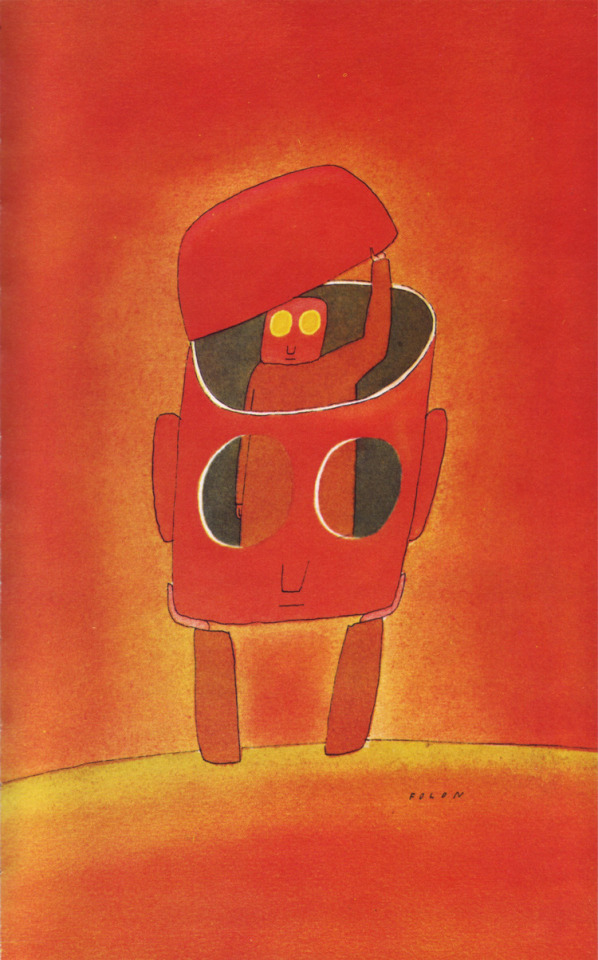
While working on a website for my Graphic Design course in the second semester, I had a hard time creating a decent idea for it. I created a couple initial designs, but something was wrong. I couldn’t tell initially what it was, but I was not happy with the outcome of my designs for some reason. It was not that I didn’t set the tracking accordingly. It was not that I used the wrong pixel density. No, it was something else. But, I couldn’t tell what. I showed it to my teacher and she had mixed feelings about it as well. We tried to come up with solutions, but everything seemed off. Weeks past, I experimented with new ideas, but the outcome was still insufficient. I was not happy. And the worst thing was, I could give great feedback to my classmates, breed new ideas for them and get them unstuck, but I was incapable of helping myself. The pinnacle of this particular event was when I brainstormed dozens of ideas together with my teacher and peers, but with no effect. Nothing seemed right, nothing worked. The reason was simple: I couldn’t visualise it in my head.

I decided that I must take a break from looking at the same piece of work again and again. However, when I came back to it, I started to clearly see the idea. I saw the navigation bar, with all its effects, the bold landing page and everything else. I could see in my head. I immediately translated it to HTML and CSS and it worked. The mechanism worked again.
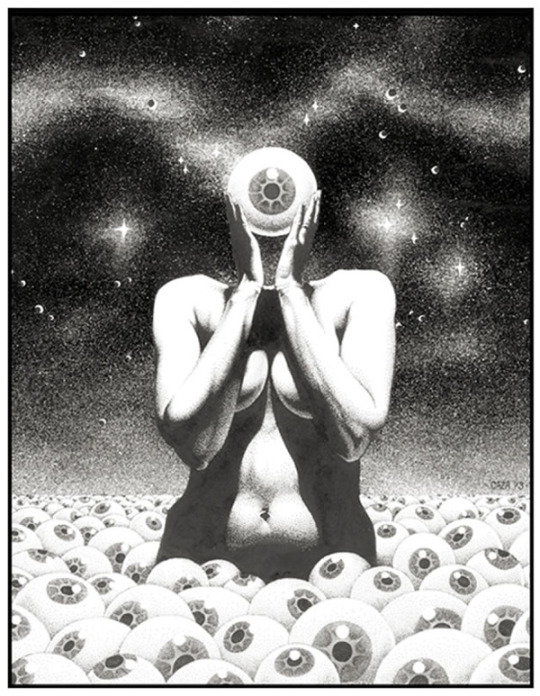
This time, I celebrated. This time, I finally understood how important seeing what you want to do is. This ‘seeing’ mechanism is a blend of years of experience and knowledge but also design instinct, risk taking. I learned through these experiences when my work is ready to be delivered and to be translated in a certain medium. I now know when the concept is correct and if I’ll be happy with the result. I know when to start designing, and more importantly, when to stop from doing it. It is an additive process of the blend between knowing, seeing and doing. Next time, I will use the hints my imagination drops when creating. Next time, I will follow my instinct and let myself guided by forces I don’t control so well. Next time, I’ll close my eyes. Because now, I see.
0 notes
Text

In the past, my design process was tightly connected to being inspired by different things. Whenever I had to create a design about a certain topic, I would immediately investigate strictly that topic. The boundaries were quite limited and I would obey to them. So, for example, if I had to design a book cover about the end of the world, I would research possible ways for the complete destruction of our planet. I would then continue depicting that idea as a design, in an obvious manner. ‘People have to understand the content of the book just by seeing the cover’ is something I would have said to myself a few years ago.

This technique is as popular between designers as it is wrong. It struck me only when I was learning more about Chip Kidd, famous book cover designer, and his past experiences. In one of his talks, he explained how in his first day of graphic design training at Penn State University, the teacher came into the room and drew a picture of an apple and wrote the word “Apple” underneath. The teacher said “OK. Lesson one. Listen up.” He covered up the picture and said “you either say this,” and then he covered up the word, “or you show this. But you don’t show both the apple and the word <<apple>> at the same time. This is treating your audience like a moron. And they deserve better”. It was then when I understood that my ways were undeveloped and I was creating artwork that underestimated the audience and did not engage the problem of reader interactivity, probably one of the most important matters in book cover design.

Now, this applies to all areas of graphic design, be it poster design or the branding for your sister’s DIY blog. You must consider the user and make him think. This means, in other words, to use your creativity. We, graphic designers, are valued for our most treasured skill: creative thinking. It is a shame not to use this skill and to simply replicate to the works of others. “Good artists copy. Great artists steal.” It was said by Steve Jobs, Pablo Picasso and many other successful people, in a form or another. Stealing in this instance refers to learning, associating from the truly good works of art and to use that knowledge for the future. Copying implies the superficial reproduction of past work, leaving no piece of genuine originality left for the future. It’s like a child that asks “why?” and receives the answer from the parent, but grows old only to ask the very same question, not ever learning from the past.
In a 2016 talk, Stefan Sagmeister, renowned graphic designer, exemplified one of his best creative thinking methods. When designing, for example, a book on creativity, most people would take a stash of other books about creativity and would remain stuck under that manta of reproducible artwork. Instead, what he always does, solves the design problem by thinking about a matter completely different. Think of the glass of water next to you. Interrogate its properties and apply the knowledge to your problem. Maybe you can make the book cover transparent, maybe you can make all the pages transparent, maybe you make the pages so thin you create an amazingly dense book, much like the bible. It is impressive how for a book about creativity, he started from a glass of water and he ended up thinking about the holy bible, ending up with a handful of original ideas. Now that is creative thinking.
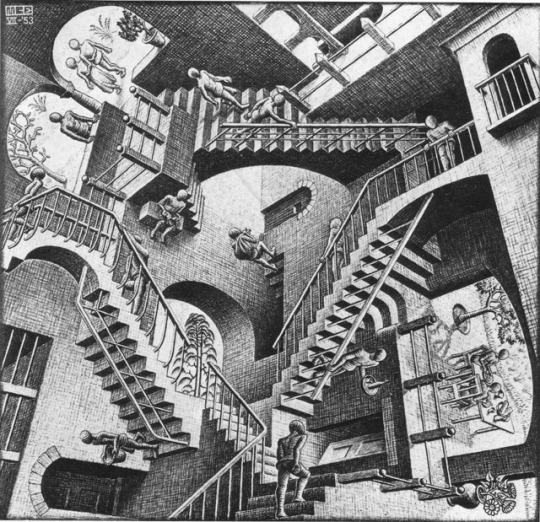
Or lateral-thinking. Now that is lateral-thinking. What, you thought Sagmeister was the ultimate inventor of creative thinking? This thinking process was promulgated in 1967 by Edward de Bono. In his concept, lateral thinking is solving problems through an indirect and creative approach, using reasoning that is not immediately obvious and involving ideas that may not be obtainable by using traditional step-by-step logic. In short, lateral thinking is when a person moves from one known idea to a new one, using creative non-traditional methods. This chain of concepts can be shorter or longer, depending on the circumstance of its use.

Lateral-thinking is not a new concept. Even Edward de Bono acknowledges that by citing as an example the Judgment of Solomon, a story from the Hebrew Bible (1 Kings 3:16-28). In this story, two mothers living in the same house, each mother of an infant son, came to King Solomon of Israel. One of the babies had died, and each claimed the remaining boy as her own. Calling for a sword, Solomon declared his judgment: the baby will be cut in two and each woman will receive half. One of the mothers thought the ruling was fair, but the other begged Solomon: “Oh, my lord, give her the living child, and in no wise slay it”. The king declared the second woman the true mother, as a mother would give up her baby if that meant saving its life. Lateral-thinking 950 BCE style.
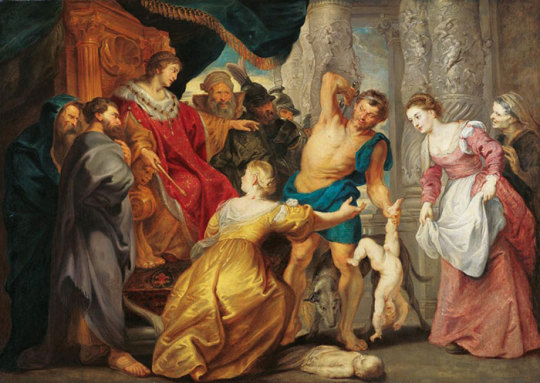
As a conclusion, I could continue explaining how the discovery of fire was creative thinking but I hope you are as convinced as I am in the utility of this technique. I must now perfect my own personal creative thinking methods in resolving both graphic design and everyday challenges, as it pushes the boundaries of human abilities further away and promotes core values of our human existence.
That will only take me a lifetime.
#graphic design#thinking#creativity#lateral thinking#originality#stefan sagmeister#edward de bono#chip kidd
0 notes
Text

Have you ever wondered what type of learner you are? How can you study best? How to enhance your productivity and your results? Well, I did. Being unsure of my own learning methods, I decided to complete an online VARK test. VARK is short for Visual Aural Read/write and kinaesthetic types of learning. After completing the questionnaire, I found out that I am a Multimodal (MM) learner, meaning I control a mixture of these four modes. The test told me that I can switch from mode to mode depending on what I am working with. As I remembered my learning habits, I started to believe it.

Visual
Having a vivid imagination and memory, it is easy for me to visualise colours, shapes, patterns and graphics. I associate key elements of virtually anything and I am able to reproduce it roughly in my head. I very own cerebral search engine often guides itself after visual elements rather than concrete ones. I found this method exceptionally practical when studying for matters that I dislike or have little interest in.
Story time. I finished one of the academically toughest high-schools in Romania. Even though theoretically I was in a ‘mathematics-informatics intensive English’ class, I had to learn more on subjects on which I had less interest in. In the first year of high school, my chemistry teacher taught us how to learn on annoying subjects: by using various coloured pencils to mark everything. The secret here is to create a correlation between the certain lesson and the colours. Keep in mind that this works if used with multiple colours and becomes a major disadvantage if you use too many or few colours. This helped me survive 4 years of intensive chemistry, biology and even Romanian language.
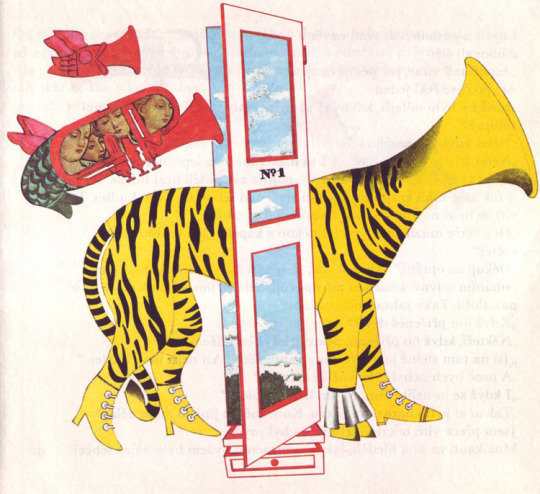
Aural / Auditory
This perceptual mode describes information that is heard or spoken. I use this type of learning for various circumstances, such as learning something by heart. Whenever I need to remember the newly written lyrics for my guitar songs, the speeches for my presentations or even poems, I just repeat it out loud by myself or in front of someone else until it sticks. Using this method, I was able to create 850 words spoken poem, to remember it and to perfectly reproduce it in front of an audience, without ever writing it down. It is uber-effective in most public speaking instances. The downside of this method is that, like everything learned by heart, you forget if you don’t continue practising. That is why you must have the spoken material written down before or after. Another instance when the A-type of learning becomes very practical is when collaborating within a team. Information sticks easily if it is well communicated and I often prefer verbal feedback over written one, as I can interrogate, add or debate various matters.
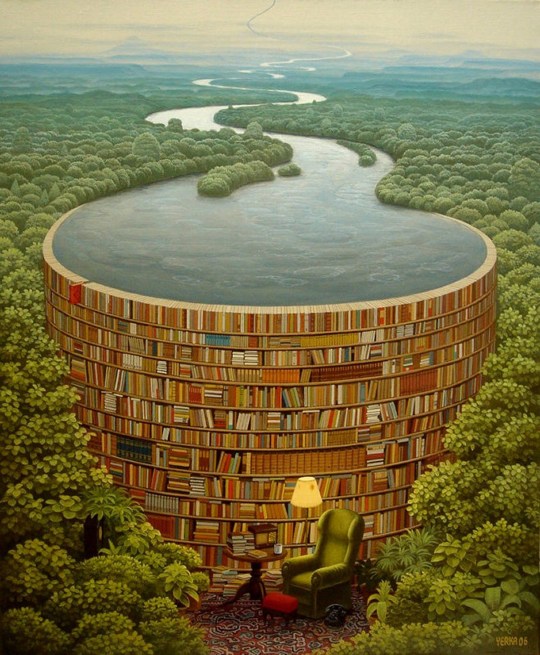
Read/Write
This type of learning is for information displayed as words. I am a very curious person. With this opportunity, I confess my addiction to information: books, journals, essays, articles, news, presentations. Basically, anything written. This type of addiction is not that uncommon in the ‘era of information’. Countless times I found myself lost in the wild lands of Wikipedia, starting from searching what Quorn is made of and ending to Nembrotha kubaryana, the species of colourful sea slug, a marine gastropod mollusk. As a young person, this is how I learn a wide range of useful information that will guide my general knowledge and intellectual work-force.
Us humans have a limited memory. We cannot remember shopping lists, memos from our parents, brief requirements for that design project and so on. That is why we write it down: we relief ourselves from the burden of remembering temporary information and pass the responsibility to a piece of paper, to a .doc file or a napkin stole from that coffee shop. I observed that by writing it down, you often remember most of the information itself. When I go shopping with a list in my pocket, I already know what I have to buy because I learned by writing. You see, writing is not only the passing of information from your head to a material, it is also creating order in a disorganized mind. You create a concrete structure of reason by writing and you declutter the string ball of information from your head. I write lists for my daily tasks, memos, but also for giving feedback to others in my design work. Because of that, I am now a proud owner of my very own Post-it notes pack. How convenient!

Kinaesthetic
Lastly, my favourite type of learning: kinaesthetic. This modality refers to the “perceptual preference related to the use of experience and practice”. In simple terms, the kinaesthetic type of learning connects information to concrete personal experiences, examples, practice or simulation. Having a vivid imagination, I can envision reality in my head and relate to it easily. This applies to demonstrations, simulations, videos, movies, case studies, practice and application.
When I first started playing with Adobe Photoshop, I became proficient by simply taking online classes on Lynda.com, Youtube and simply practising it by myself, getting my hands dirty (yes, from a keyboard). In graphic design, this technique helps me tremendously when I simply analyse case studies. If I see a McDonald's ad on my way home, I can look at it and relate to how it was done, what font is that, the grid system behind the visuals, etc. Basically, I steal knowledge from every piece of graphic design that surrounds me, making it a case study. A great tool for developing this skill as a graphic designer is the blog BrandNew, in which professional graphic designers critique re-brandings of businesses.
To conclude, knowing that I am a Multimodal type of learner I will always use my learning strengths in various circumstances to enhance my productivity, judgement and expertise in Graphic Design, but also in day to day life.
0 notes
Text

One of the most effective means of developing yourself is by listening to people with greater knowledge and experience than you. When you are a kid, you are being taught by your parents and grandparents. Then you go to school, where you also have teachers that educate you. Then you live a life in which you are influenced every day by different people surrounding you: friends, actors, musicians, artists, etc.
In graphic design, the people that mostly influence you are the teachers, other creative artists and colleagues; professionals with the same or greater experience. Let’s suppose you are presented a new brief. You tackle it in your own way, you generate a concept and you show your baby idea to the world, be it your creative director, teacher or colleague. You receive feedback from them and then what?

If you would have asked me this question a month ago, I would have said something like this: “- Well, obviously, they have greater experience, therefore, they will surely give you a correct path in which to go with your project. Listen to them and act accordingly to their feedback.” That is exactly what I was doing. I thought that my classmates were my equals and I would sometimes follow their thoughts, but often I would end up pursuing my own ideas. But with teachers, the scenery was different. I had the belief that due to their extended experience they must be right, they are not prone to making mistakes and I should consider every bit of feedback as a word of god. If they think the colours don’t suit, the colours don’t work. If the font is hideous, well it is. If whatever that person thinks, then whatever I will think it is true. As you can see from the way I phrased my old process, it was not very great.
How I realised my process was not that great? I had the task to design an illustrative billboard on one of the modules from last semester. The billboard had to advertise a cardigan and a scarf. I decided to use a nostalgic mood that would trigger an emotion in my target audience. I created my artwork and I received the initial feedback from my teacher saying that the nostalgic sentiment that I build in the design works well. Even though I had mixed feelings about this concept, I blindly followed the advice of the mentor. Comically, when I officially submitted my work for evaluation, on the same nostalgic illustration I received a negative feedback from the same teacher, explaining to me that a cheerful, optimistic take would have worked much better. One may ask himself: how could the same person have two completely opposite opinions on the same matter in just two months?

The explanation is quite simple. Every person, be it a teacher, Morgan Freeman or Jay-Z, is entitled to an opinion, a natural reaction to what he sees at that time. This viewpoint is surrounded by various factors, such as personal mood, interests or background. The opinions can change, but what should remain the same is your own personal filter. Everyone should filter the information they receive all the time and allow only the truly relevant opinions to influence them. Any other bit that doesn’t pass their filter in the head won’t matter that much or even at all.
From this experience, I learned that I need to filter every feedback before deciding my next actions as I am the holder of the ultimate responsibility. I filter, I decide.
0 notes
Text

Cheers darling,
You are a very messy person. I sometimes think about how you can make sense of all this chaos. Your ideas are muddled: the good ones float into a void of bad concepts. You are often incapable of extracting the unique and you end up cultivating the common. Maybe that is why you are dissatisfied with your work. Maybe that is why you work up late. Maybe that is why you lose sleep. Maybe that is why you are messy. This venom is present in your profession. This venom infiltrates in your life. Luckily for you, I have the antidote for both of us.
Let’s do a quick imagination test, you’ll like it. Close your eyes. Wait. Scrap that. Maybe not, because you will not read this text anymore. Can we start again? Perfect. Let’s do a quick imagination test. You are stranded on a remote island. You created an SOS sign using sticks, stones and some algae. Maybe tomorrow a boat will rescue you. Maybe next week an airplane will pass by. Maybe next month a helicopter will liberate you from this nightmare. Maybe, maybe, maybe. Hypothesises, hopes and desires that have no certainty. You may be saved or you may die waiting. You can make use of your time by learning how to fish, by building a boat, by trying things out, by constantly failing until you succeed once. That one time will be your salvation.
Let me put it in a simple context. You are a graphic designer and you need some feedback. Yes, you can ask your teacher from university for feedback. Yes, you can ask your mom. Yes, you can ask your weird flatmate. But all these things are ephemeral and subjective, and ultimately you are the one responsible for your own good. You are responsible of sifting the information given by others through your own personal filter. You must learn from them how to reflect better on your own work. You have to challenge and improve their thoughts. You need to be your own general in your own army. You must master self-criticism.
Since you have started university, I have observed how you provide feedback to as many peers as possible. I think it is a great everyday practice you turned into a habit. But you do one major mistake: you try to push your own ideas, to overexpose your style, your vision and your concept over their project. This way you suppress the creative ingenuity of the designer and you simply turn that person into your copy. How exciting. Let the artist’s imagination go wild. You may only show them a path through their jungle of unknown brilliancy.
To end this letter, I urge you to accept my suggestion: work harder on improving your critical skills. Learn to first govern your action through self-criticism and then aid others as much as you can in achieving their own true potential. Only through these new skills you can get one step closer in achieving your major goal: becoming a creative director.
Peace and love, Your consciousness
0 notes
Text

99designs is a graphic design online marketplace that helps businesses and individuals to find affordable and attractive designs. The website works on the concept of crowdsourcing. A client creates a brief for his design needs, sets a deadline, pays for it beforehand to 99designs and the website helps him launch a design contest. You can create a contest from a handful of categories: Logo and identity, Web and App Design, Business and Advertising, Clothing and Merchandise, Art and Illustration, Packaging and Label, Book and Magazine and some other miscellaneous ones. Dozens of designers then try their best to create the suitable artwork for the client or, how 99designs call him, the contest holder. Naturally, more designers create artworks for the project if the contest holder pays more. After the deadline expires, the contest holder chooses six lucky contestants for the final round. These designers have a couple of days to tweak their designs using the contest holder’s feedback. Lastly, the client chooses the winning design and the delivery of designs and payment can begin.
Over the last three years, I have participated in over twenty graphic design contests on 99designs and observed hundreds. I was motivated initially by the positive aspects given by the usage and participation on 99design, but I was later on too often discouraged by the negative ones. This mixed experienced through-out multiple projects from client all over the world helped me digest the website and to put into a personal perspective why 99designs is both a heaven and a hell of creative artists.

Heaven: 99designs represents a valuable learning source for complete beginners. Before I even started designing and submitting my own work on the crowdsourcing website I have analysed contests objectively and learned by myself what are the standards and rules of a graphic design contest or project. I taught myself what are the logical steps into creating artwork and how to present it to the client in the best way possible. Most contests are open for all users to see. I have followed a lot of such contests in their development and understood what are the good and bad design practices. When I was finally ready, I found out that the interaction with the various clients helped me gain valuable experience as well as applicable communication skills in my profession. The design briefs develop my conceptual quick thinking and how to solve various visual communication tasks. The feedback provided by clients after submitting each design helped me improve the level of my work and my reasoning. 99designs represents an unorthodox, applicable, easy to use tool that helps young unexperienced graphic designers grow their skills and practice.

Hell: More, but less. 99designs prides itself in the concept of crowdsourcing. A logo contest with the prize pool of as little as $200 attracts on average 95 designers. That is because the “designer” title can be earned by anyone with an email and a keyboard as quickly as you would spell “99penny”. The designers then compete with each other for weeks, creating multiple designs for the great prize. In my experience, the quality of the work produced by the designers stagnates somewhere between mediocre and trendy. It is not uncommon that designers would copy the concept of a design with a rating of 4 or 5 stars, thus encouraging corrupt and vicious circle of creative thefts. The designers that are unexperienced throw the dice for the pot of gold and the mildly experienced ones simply understood that it is not worth it to put too much energy and time into a contest which could easily result in gaining nothing. The clients expect that a crowdsourcing type of project will result in a great range of designs which can appeal to them most. In reality, the projects turn out to become an unfiltered inbox full of spam designs, graphic design crimes and superficial work. Quality, not quantity. Or how German industrial designer Dieter Rams put it in his ten commandments of good design, “Less, but better”.

Hell: The illiterate becomes the preacher. Usually, the clients are divided into two architypes: the ones with ideas and the ones without ideas. The former will have a very strict idea which they want to turn into reality. Their obvious lack of experience in graphic design and their emotional attachment to their concept ends up in punishing designers with proactive innovative ideas and encourages obedient designers. How can you dare explain the contest holder that his precious book would not look good in Papyrus? Either way, this process works against the client and its business needs. On the other end, the latter type of client will introduce the brief by claiming he is open to any type of ideas. Without any given guideline, the designers will then develop their concepts freely. Through feedback and star-rating, designers might realize that any type of idea is welcomed if they respect the personal and massively subjective preference of the contest holder. In my experience, smart well executed designs can be easily overlooked and eventually a design with a random stock image and some quick typography wins the 99designs lottery. The crowdsourcing system favours clients and their somewhat knowledge of design and disfavours design originality and expertise.

Hell: Graphic designers or digital martyrs. As I entered the website more often, I realized that I was trading my time, energy, skill and knowledge freely in exchange to a minuscule chance of winning some pocket money. After I researched the most successful designers on 99designs that actually can make up for a living out of it, I found out that only 40% out of their total efforts and contests entered turned out to be wins. That means 60% out of all the intellectual effort, creative input and precious time goes into pure vain and is not acknowledged in any way. That is the happiest scenario. The ugliest scenario is when 100% of your work is ignored. On 99designs you can work for days on a design and then not even receive a single word from the contest holder. But the martyrdom doesn’t stop here. It is not uncommon for contest holders to create briefs for their projects, receive hundreds of designs and concepts and then claim a refund from 99designs. These contest holders use the inspiration and simply recreate the desired artwork using their own capacities or develop on another design. They’ll happily use the artwork and the designer will never know. I once became a finalist in a menu design contest and lost to someone else. I had no problem with that until I realized that the client asked the happy winner to tweak their design. The final piece was staggeringly similar to my design. How convenient is to have an army of martyrs ready to give themselves in.
To conclude, I carefully weighted the pros and the cons of continuing to use a crowdsourcing website and made an informed decision. The platform is nothing more than the purgatory for unexperienced or mediocre designers: the intermediate state they find themselves in while trying to find salvation and redemption, or in simple terms, a real job. One can spend a lifetime never escaping it, waiting for their destined purification.
I decided that this limbo is not for me. So I logged off.
0 notes
Text

One of the most important matter us humans can ever question is the meaning of life. I have no idea what the meaning of life is and I am not in a position anywhere close to answering this everlasting question. This blog post will not be about that. This blog post is about how to give some greater meaning to your life, by building a legacy.
Legacy is a concept commonly associated with financial benefits and personal properties such as money, cars or houses. However, legacy represents anything handed down from the past, as from an ancestor or predecessor. Legacy can have plenty of different forms which are often neglected by some. Legacy is the knowledge ancient Rome passed to the world. Their ageless war techniques are still used today vastly by police to fight violent riots.
youtube
Legacy can be the product of a group of people, as seen above, but a legacy can be personal, individual. William Shakespeare’s plays represent a crucial legacy for theatre and literature, but also a cultural legacy. William Shakespeare died 401 years ago, but his work is now read extensively by all cultures around the world.

We are born to live by the legacy of past generations. We are doomed to abandon our fragile bodies at one point in our lives. By creating a legacy, we can outlast our ephemeral nature. Our work and thoughts can be kept and spread by others, perpetually influencing and shaping our civilization.
How can we build a legacy in art? How can we become legends? How can we become influential people for future generations?
By not doing what everyone else is doing. By not trying to fit in. By not participating in timely trends.
By not taking the easy way out. By not giving up.
By not underestimating your powers. By not being shy.
By not stagnating. By being a flowing river.
By embracing the unusual.
By questioning the common.
1 note
·
View note